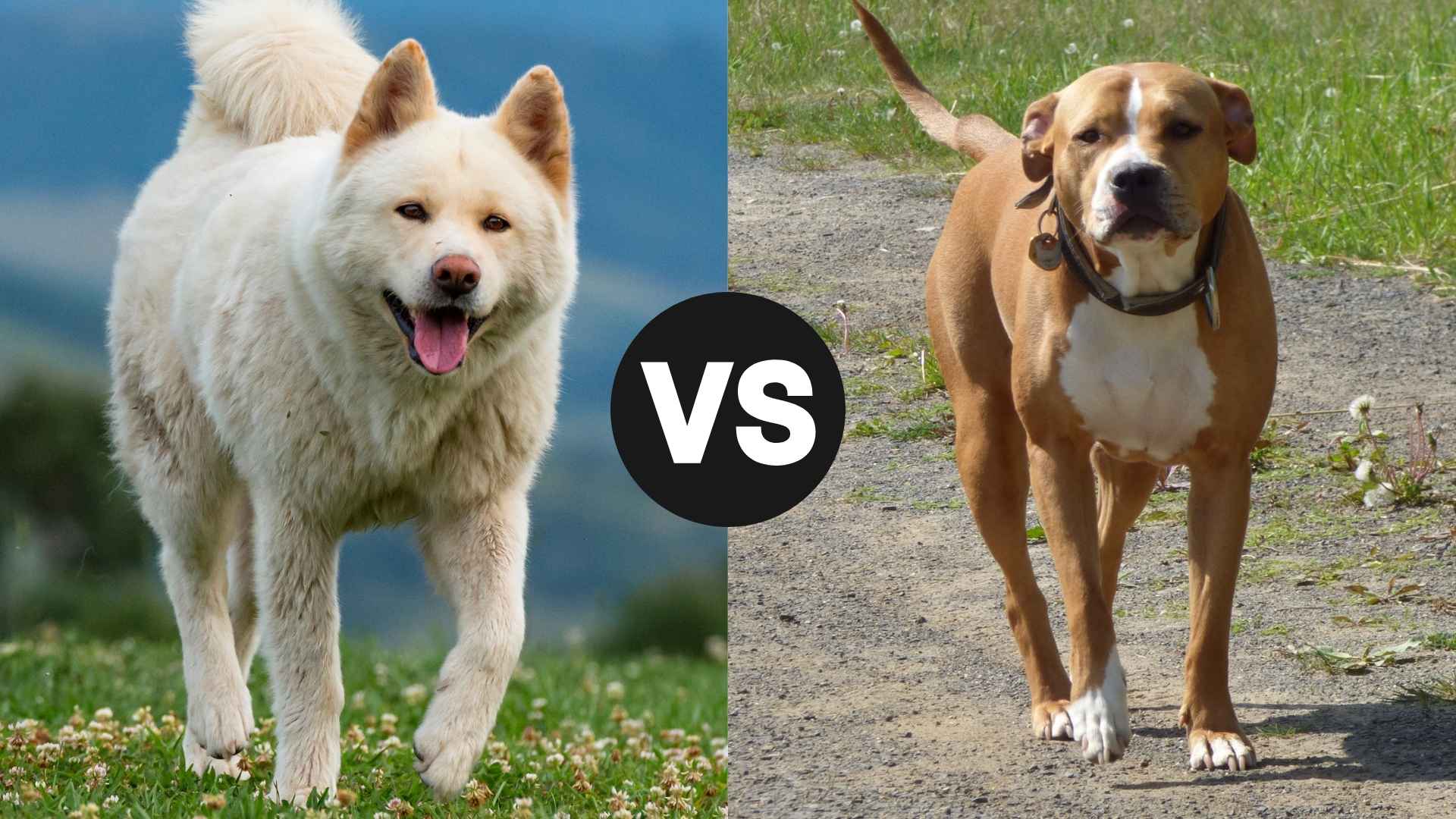When it comes to powerful and protective dog breeds, the comparison of Akita vs Pit Bull often sparks strong opinions. Both dogs have a commanding presence, known for their loyalty, strength, and natural guarding instincts. Yet despite some surface-level similarities, these two breeds differ in origin, temperament, and purpose.
The Akita, hailing from the rugged mountains of northern Japan, was originally bred for hunting and guarding and is now honored as a national treasure. In contrast, the Pit Bull’s lineage traces back to 19th-century England, where it was bred from Bulldogs and terriers for bull-baiting and later used for hunting semi-feral livestock.
While both breeds are courageous and deeply devoted to their families, their history and behavior traits tell very different stories. In this blog, we’ll explore the key similarities and differences between Akita and Pitbull to help you decide which dog might be the right fit for your home and lifestyle.
Akita vs. PitBull
Akita vs PitBull comparisons reveal two loyal yet vastly different canine companions. The Akita, a dignified breed from Japan, comes in two types: the American Akita and the Japanese Akita Inu. Originally bred for hunting and guarding, Akitas are large, strong-willed dogs with a thick double coat.
They are fiercely loyal to their families but often aloof or protective around strangers and other animals. Due to their dominant nature and tendency to be intolerant of other pets—especially dogs of the same sex—Akitas thrive best in single-dog households with experienced owners. Their quiet vigilance and occasional “mouthing” habit reflect a breed that values calm companionship and assertive leadership.
On the other hand, the Pit Bull, particularly the American Pit Bull Terrier, is a muscular and affectionate breed that has often been misunderstood due to its history. Despite being bred for dog fighting, aggression toward humans was deliberately bred out, making well-socialized Pit Bulls loyal, people-loving companions.
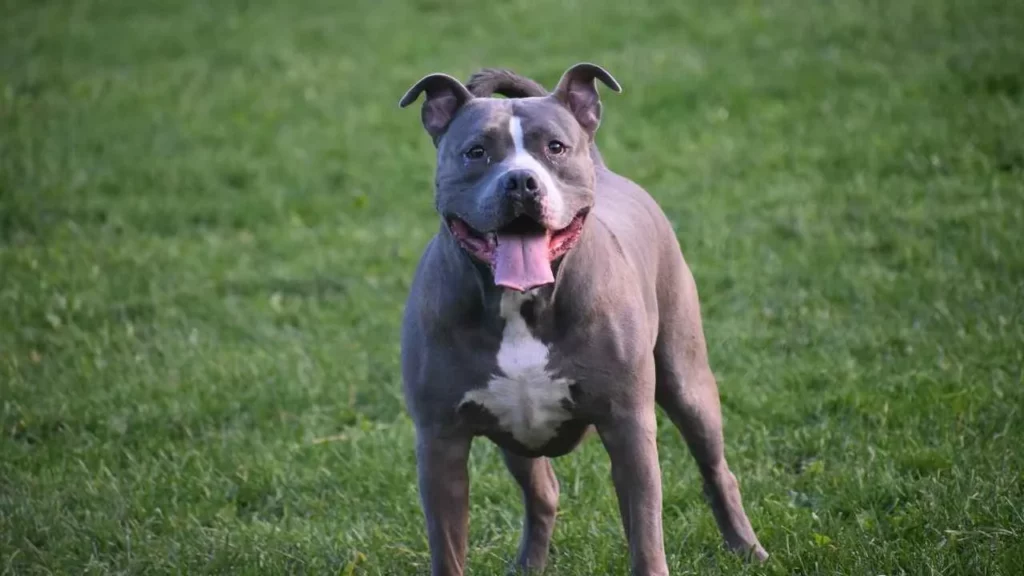
While they may not always get along with other animals and have a high prey drive, they’re typically gentle with humans and excel in active homes with proper training. Unlike the Akita, which is more reserved, Pit Bulls are known for their enthusiasm, big smiles, and eagerness to please. Their controversial past has led to legal restrictions in some areas, but when raised responsibly, they are playful, trustworthy family pets.
Pitbull vs. Akita: Breed Origins and Ancestral Background
The Pit Bull’s origins trace back to 19th-century England, Scotland, and Ireland, where Bulldogs were crossed with terriers to create a dog that was agile, strong, and tenacious—traits ideal for blood sports like bull-baiting and ratting. These dogs were bred to be aggressive toward other animals but manageable by humans, as handlers had to intervene during fights.
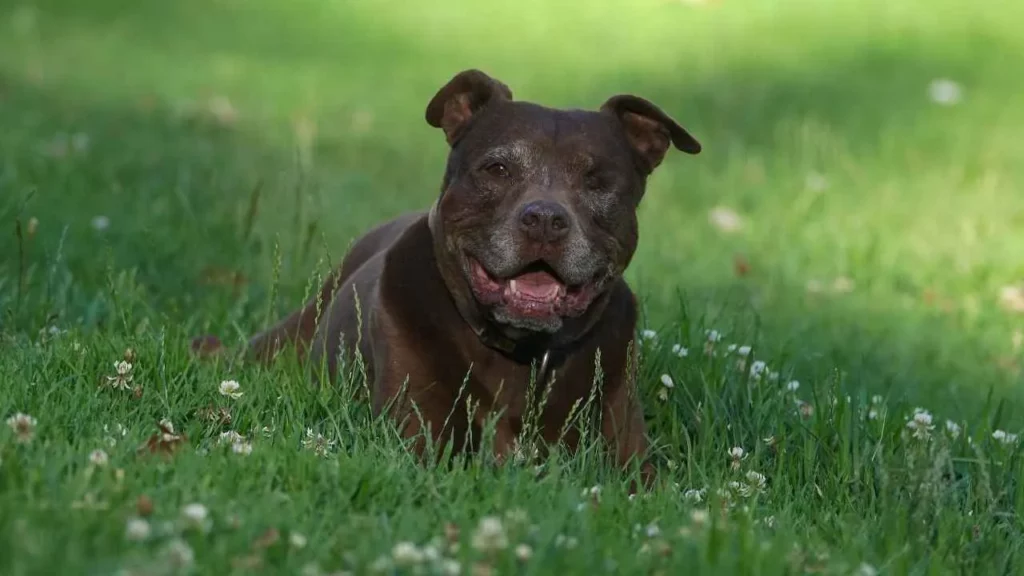
Over time, this lineage evolved into what is now known as the American Pit Bull Terrier, formally recognized by the United Kennel Club in 1898 and the American Dog Breeders Association. While the American Kennel Club does not recognize “Pit Bull” as a distinct breed, the term encompasses several breeds, including the American Staffordshire Terrier and Staffordshire Bull Terrier, according to DogsBite.
Unfortunately, irresponsible breeding and the illegal resurgence of dogfighting have tainted the breed’s reputation, despite its originally loyal and affectionate temperament.
In contrast, the Akita originated in 17th-century Japan, specifically the Akita Prefecture in the country’s northern region. Bred as powerful hunting dogs, Akitas were courageous enough to track and take down large game like wild boars, deer, and even bears. Their stature, strength, and loyalty made them ideal guardians and deeply respected symbols of protection and health in Japanese culture, according to Britannica.
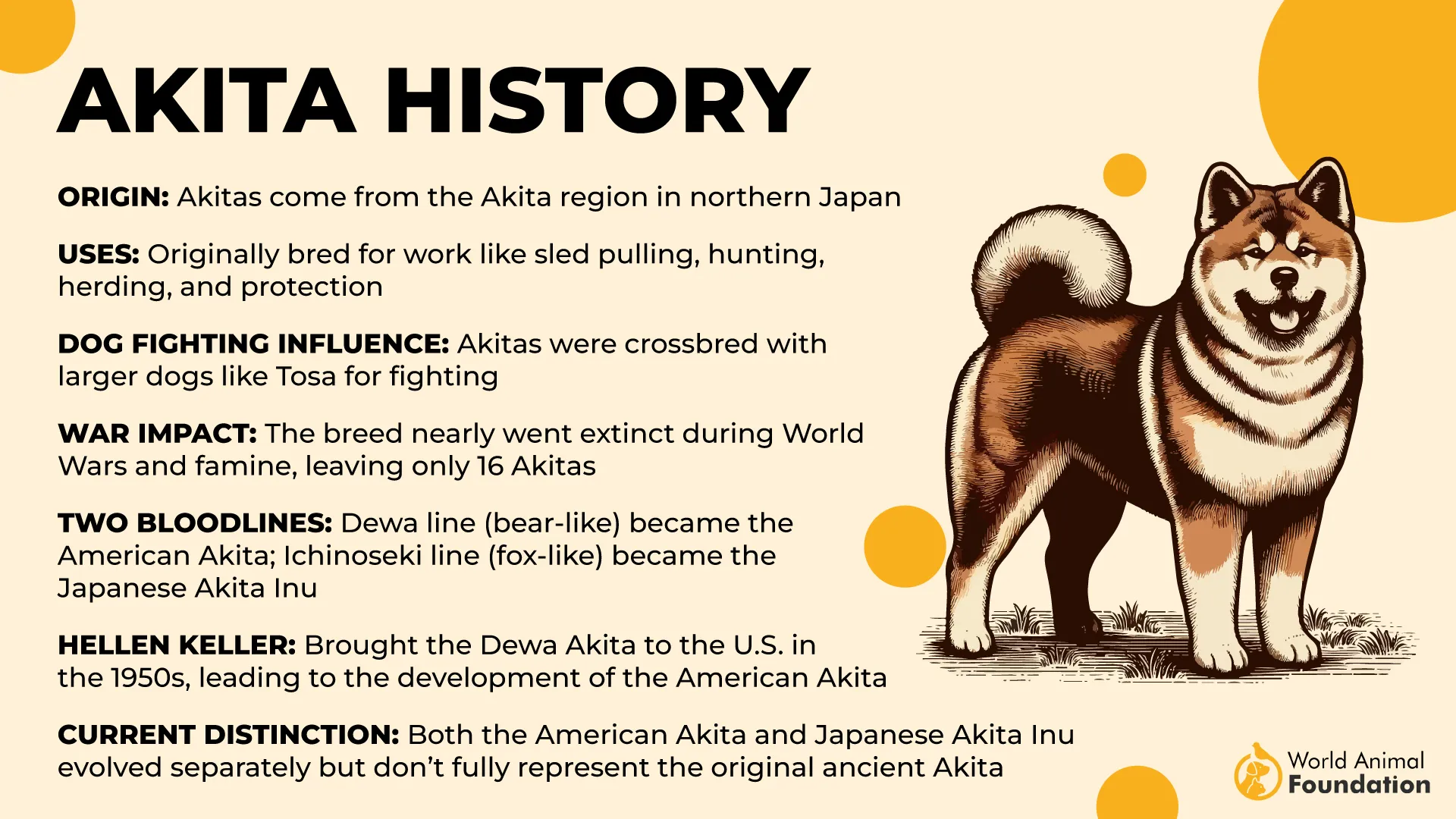
Akitas gained widespread cultural recognition through the story of Hachiko, the famously loyal dog who waited at a train station daily for his deceased owner. The breed’s presence in the U.S. began when Helen Keller brought the first Akita over in 1937, with more following after World War II. The American Kennel Club officially recognized the Akita in 1972, cementing its status as a noble and historic breed.
Pitbull vs. Akita: Physical Size Comparison
Pit Bulls are medium-sized, muscular dogs known for their athletic build and strong, stocky frame. Males’ average weight is between 35–70 pounds, and they stand 18–21 inches tall, while females are slightly smaller, weighing around 30–60 pounds and standing 17–20 inches tall.
Their short, smooth coat is low-maintenance and comes in a variety of colors, including black, blue, brindle, and fawn. Despite their compact size, Pit Bulls are powerful and agile, built for speed and stamina.
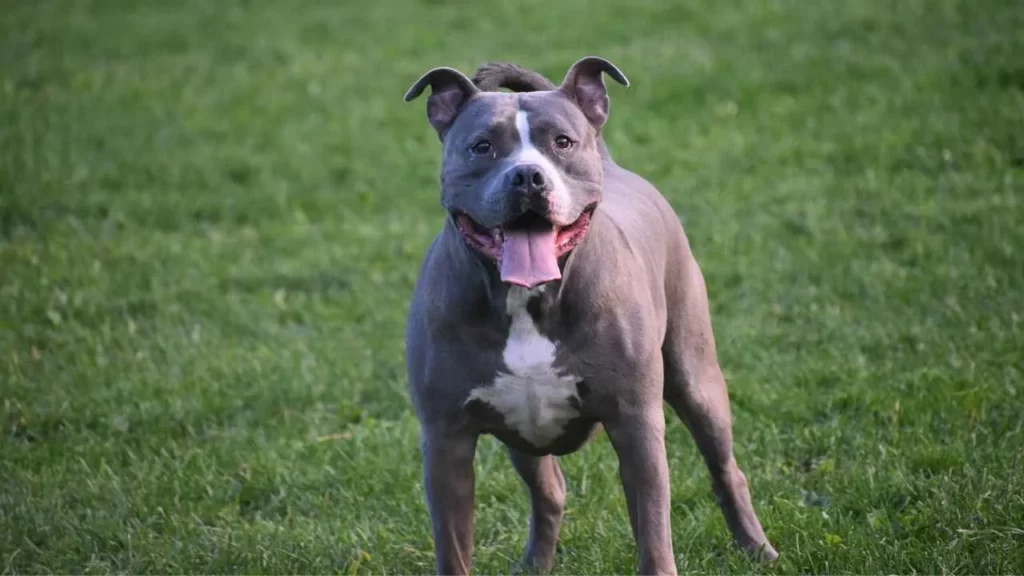
In contrast, Akitas are significantly larger dogs and more imposing in stature. Akita average height is 24–28 inches tall, these dogs generally weigh between 70–130 pounds. With their broad build, thick double coat, curled-over tail, erect ear and foxlike face with upright triangle-shaped ears, Akitas have a striking and regal appearance.
Their plush coat adds to their volume, making them appear even more substantial. This size difference alone sets the Akita apart as a more commanding presence compared to the Pit Bull.
Pitbull vs. Akita: Distinctive Appearance and Features
Pit Bulls, especially the American Pit Bull Terrier, are medium-sized dogs with a muscular, athletic build. They feature broad, wedge-shaped heads, strong jaws, and sturdy necks that enhance their stocky frame. Their round, well-set eyes are typically dark—any color is accepted except blue. Ears are set high and may be cropped or natural.
Their short, sleek coat is easy to maintain and comes in nearly any color or pattern except merle. A whip-like tail tapers to a point and doesn’t extend past the ankles. Though similar in appearance, pit bull types can vary slightly due to differences across breeds within the group.
Akitas are large, powerful dogs with a dignified and imposing presence. They have broad heads, erect triangular ears, and deep-set, almond-shaped eyes that give them a keen, alert expression. Their thick double coat—plush and suited for cold weather—comes in colors like white, red, brindle, pinto, and sesame, with non-white Akitas typically featuring a distinct facial mask.

A signature trait is their large, curled tail carried over the back. Built with sturdy legs, webbed paws, and a muscular frame, Akitas have a wolf-like elegance that matches their calm, serious, and watchful nature.
Pitbull vs. Akita: Behavioral Traits and Temperament
Pit Bulls are often affectionate, playful, and eager-to-please companions, known for their loyalty and enthusiasm. They thrive on physical activity and enjoy games that challenge both their strength and intelligence. While typically quiet in the home and not prone to excessive barking, they can be stubborn and require consistent, firm training.
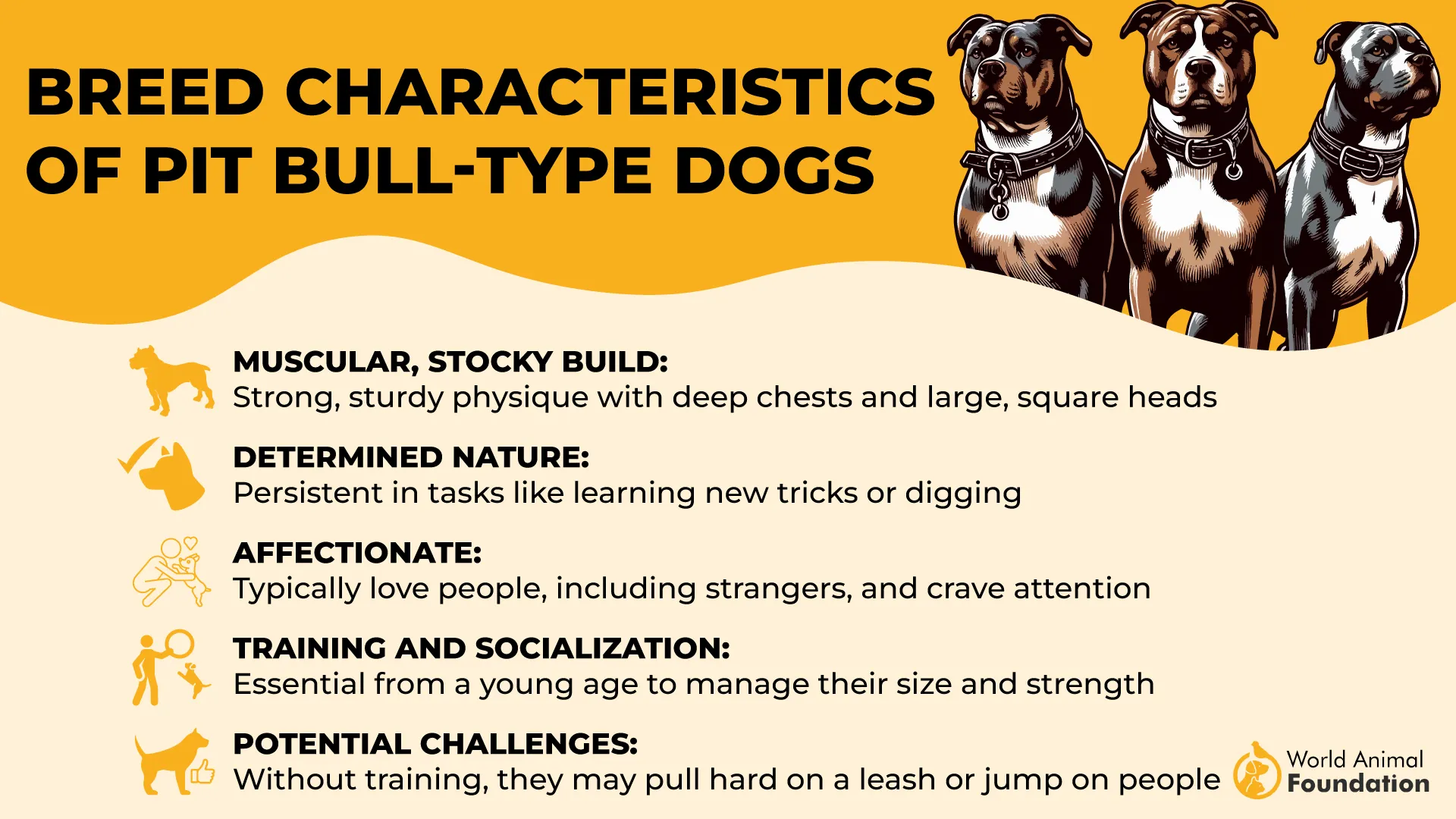
Despite their controversial reputation, most Pit Bulls are friendly with people and can be quite obedient with proper guidance. However, due to their history as fighting dogs, some may show aggressive behavior toward other canines and, in rare cases, even people, though such behavior is typically linked to poor training or mistreatment, states Britannica.
In contrast, Akitas are calm, serious, and independent dogs that form deep bonds with their family but remain aloof toward strangers. Known for their strong protective instincts, Akitas are naturally wary and may misinterpret unfamiliar situations as threats. Their reserved nature makes them less playful as adults, and they prefer to engage on their own terms.
While they are not frequent barkers, they can be aggressive toward other dogs and should ideally be the only pet in the household. Akitas can be stubborn and are best suited to experienced dog owners who understand their unique temperament. Their strong prey drive and intolerance for young children or unfamiliar pets make early socialization and consistent training essential.
Pitbull vs. Akita: Expected Lifespan and Health Outlook
Pit Bulls generally enjoy a lifespan of 12 to 14 years, with many living healthy, active lives when properly cared for. However, the breed is predisposed to several health conditions, particularly bone-related issues such as canine hip dysplasia, which can affect mobility and cause long-term discomfort. Treatment may require surgery or physical therapy.
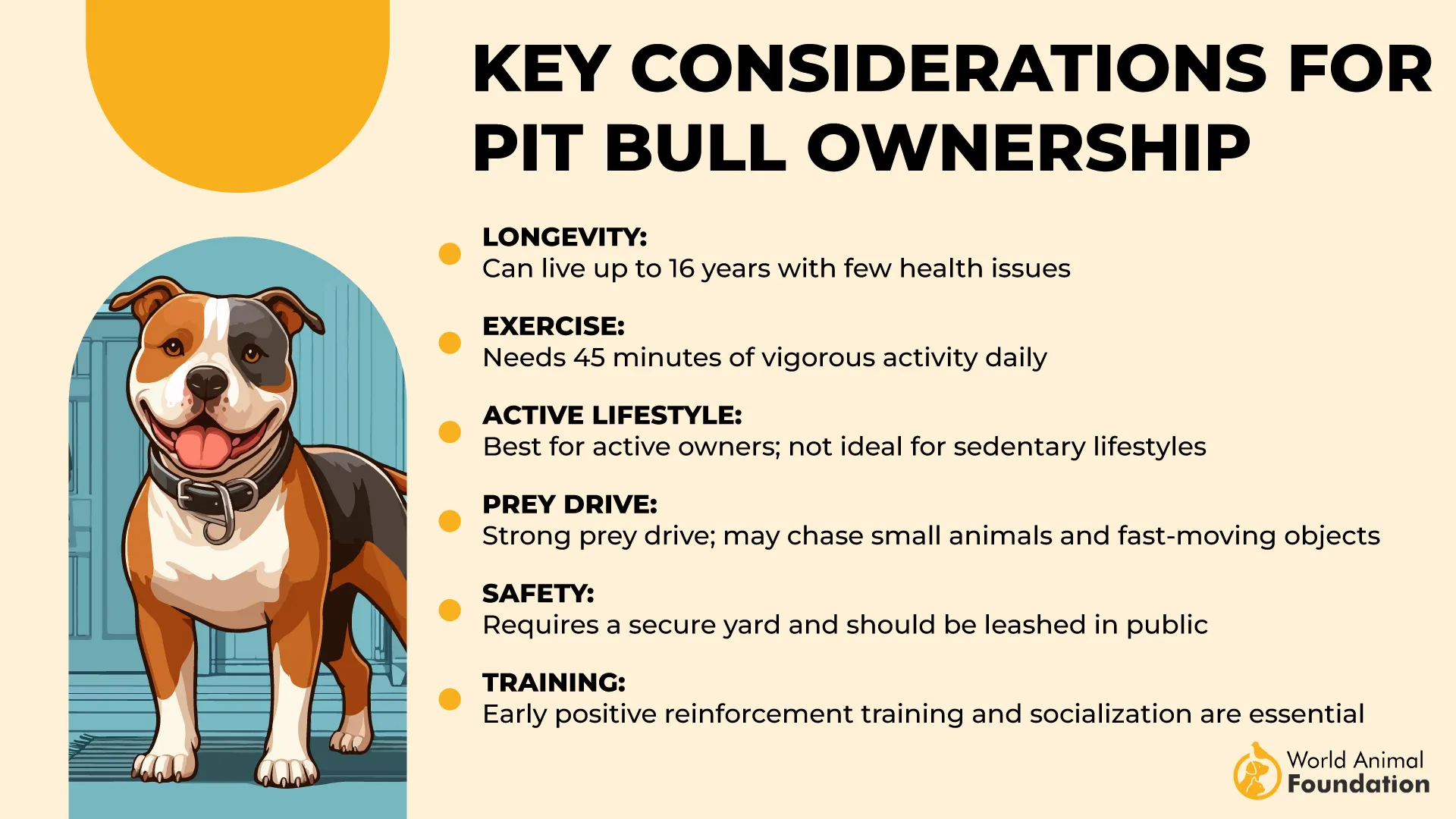
In addition to orthopedic problems, Pit Bulls may also be prone to thyroid imbalances and certain heart conditions, making regular veterinary check-ups essential for early detection and management of these concerns.
Akitas, on the other hand, have a slightly shorter average lifespan, typically ranging from 10 to 13 years. As a large breed, they face specific health challenges, including gastric dilatation volvulus (bloat), a potentially fatal condition that requires immediate emergency treatment. Akitas are also susceptible to patellar luxation, hypothyroidism, progressive retinal atrophy, and hip dysplasia, states PetMD.
Their large frame and rapid growth in puppyhood necessitate a carefully balanced diet tailored to large breeds. Routine screenings and responsible breeding practices can help mitigate many of these health risks, making it important for potential owners to work with reputable breeders and remain proactive in their dogs’ healthcare.
Pitbull vs. Akita: Summarized Key Differences
Pit Bulls and Akitas are both loyal and strong dogs, but they cater to very different types of owners. Pit Bulls are affectionate, sociable, and more adaptable to families with children. Their easy-going nature and lower grooming needs make them appealing to active households looking for a playful, eager-to-please companion.
While they do require firm training and attention, Pit Bulls tend to be more tolerant of strangers and less stubborn in training, making them better suited for first-time or less-experienced dog owners.
In contrast, Akitas are larger, more reserved, and fiercely protective. They thrive in environments where they can bond closely with one family and perform guarding or working roles. Due to their strong-willed, independent personalities and low tolerance for strangers or small children, Akitas are better suited for experienced dog owners without other pets.
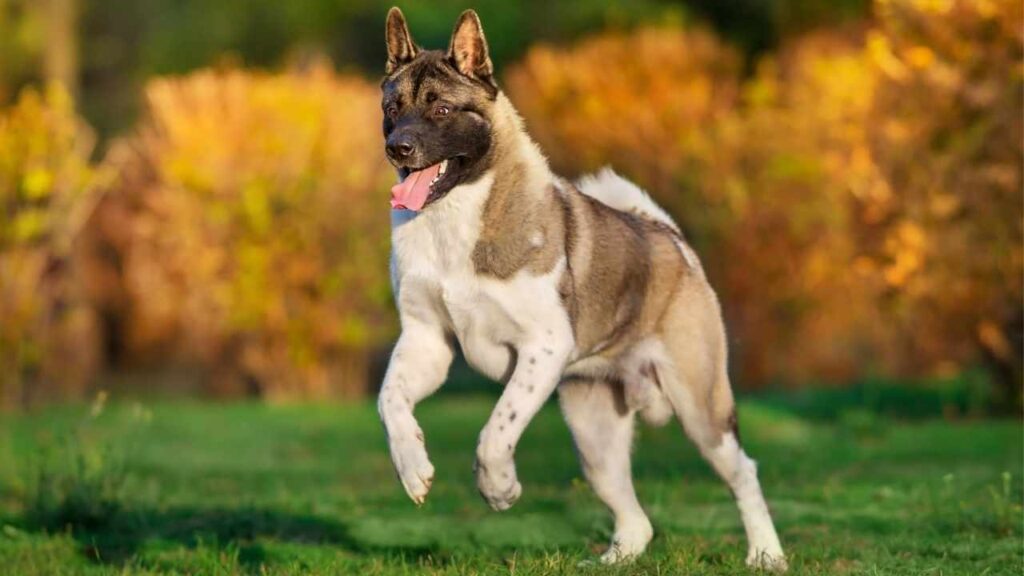
While they demand more effort in grooming and training, Akitas offer unmatched devotion and territorial loyalty, making them ideal for those seeking a powerful and watchful guardian.
Conclusion
Choosing between an Akita and a Pit Bull depends on key factors like temperament, training needs, and family dynamics. While not all PitBulls are the same due to cross-breeding, many are moderately family-friendly, affectionate, and agile companions with the right training. Akitas, with their erect ears and strong, dignified presence, are more reserved and protective, best suited for experienced owners and less ideal for homes with small children or other pets.
Though both breeds can be excellent watchdogs, Pit Bulls are generally more pet-friendly and responsive to obedience work. Akitas, while fiercely loyal, require firm guidance and are more independent. With regular exercise, structure, and commitment, either pup can become a loyal and intelligent addition to the home.


